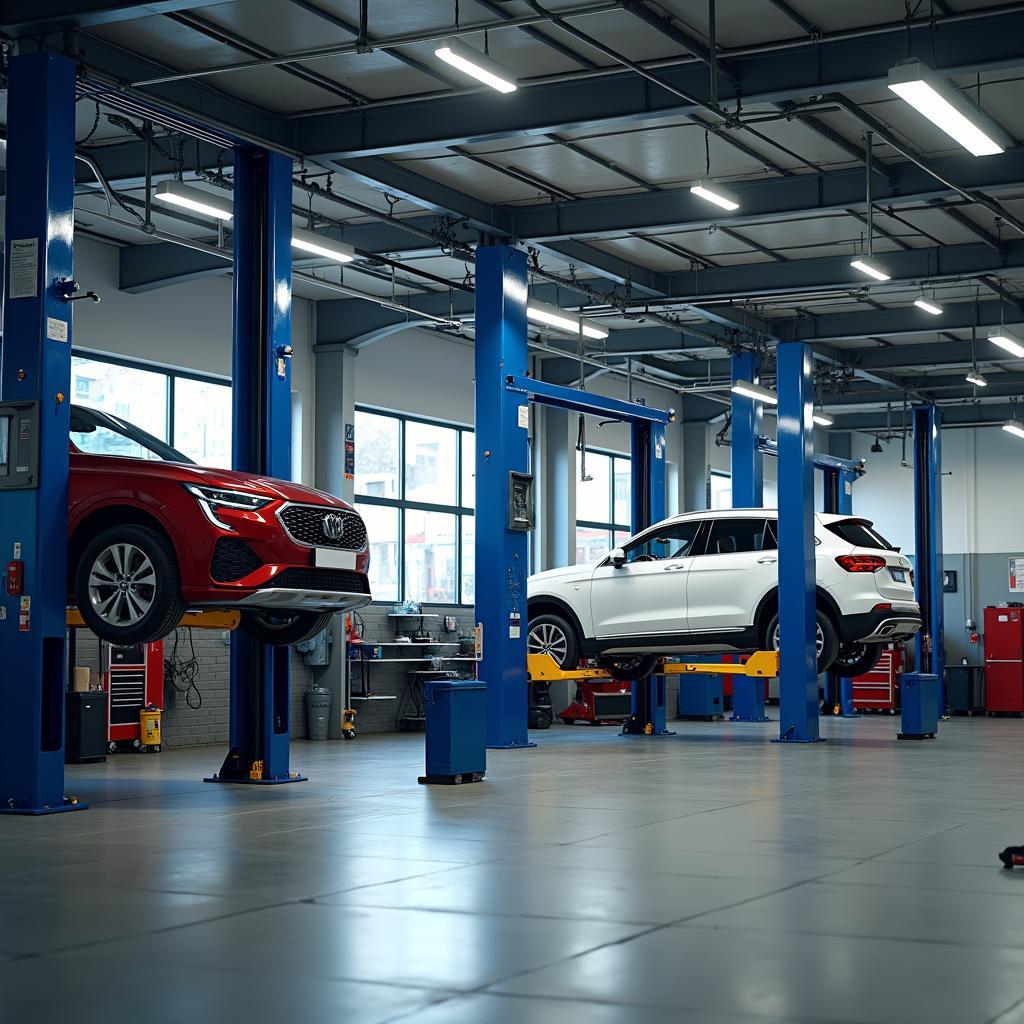Car service machine equipment plays a vital role in modern automotive repair and maintenance. From diagnostic tools to specialized repair equipment, having the right machines is crucial for providing efficient and accurate service. This guide explores the essential car service machine equipment, covering their functions, benefits, and how they contribute to a successful car service operation.
Key Car Service Machine Equipment Categories
Car service machine equipment can be categorized into several key areas:
Diagnostic Equipment
- OBD-II Scanners: These are essential for reading diagnostic trouble codes (DTCs) and identifying issues within the vehicle’s electronic systems. Advanced scanners can provide live data streams, allowing technicians to monitor sensor readings in real-time.
- Oscilloscope: This tool helps visualize electrical signals within the vehicle’s systems, enabling precise diagnosis of complex electrical faults.
- Battery Testers: These tools evaluate the health and charge capacity of a vehicle’s battery, helping determine if replacement is necessary.
Lifting and Handling Equipment
- Two-Post Lifts: A staple in most car service shops, these lifts raise the vehicle off the ground, providing access to undercarriage components.
- Four-Post Lifts: Ideal for wheel alignments and other services requiring stable lifting, these lifts offer a wider platform for the vehicle.
- Transmission Jacks: Used to support and remove transmissions and other heavy components during repairs.
Tire and Wheel Service Equipment
- Tire Changers: These machines simplify the process of removing and mounting tires on wheels.
- Wheel Balancers: Essential for ensuring smooth and vibration-free driving, these machines detect imbalances in wheels and tires.
- Wheel Alignment Machines: These sophisticated systems measure and adjust the angles of the wheels to ensure proper alignment, optimizing handling and tire wear.
Other Essential Equipment
- Air Compressors: Provide compressed air for various applications, such as powering pneumatic tools and inflating tires.
- Welders: Used for repairing metal components and bodywork.
- Brake Lathes: Resurface brake rotors and drums to ensure smooth and consistent braking performance.
Why Investing in Quality Car Service Machine Equipment Matters
Investing in high-quality car service machine equipment offers several benefits:
- Improved Efficiency: Specialized tools and machines significantly reduce the time required for various tasks, leading to increased productivity.
- Enhanced Accuracy: Advanced diagnostic tools enable precise identification of issues, reducing guesswork and minimizing the risk of misdiagnosis.
- Increased Safety: Proper lifting and handling equipment ensures a safe working environment for technicians.
- Better Customer Satisfaction: Efficient and accurate service translates to satisfied customers and repeat business.
Selecting the Right Car Service Machine Equipment
Choosing the right equipment depends on several factors, including the types of services offered, the budget, and the available space. Consulting with experienced professionals can help identify the most appropriate equipment for your specific needs.
Conclusion
Car service machine equipment is a critical investment for any automotive repair and maintenance business. By selecting and utilizing the right equipment, car service operations can enhance efficiency, accuracy, and safety, ultimately contributing to a successful and profitable business. Investing in quality car service machine equipment ensures you’re prepared to handle the complexities of modern vehicles.
FAQs
-
What is the most important piece of diagnostic equipment? An OBD-II scanner is crucial for reading diagnostic trouble codes and identifying issues.
-
What type of lift is best for wheel alignments? Four-post lifts are typically preferred for their stability.
-
How often should wheel alignment be performed? Consult your vehicle’s owner’s manual, but it’s generally recommended every 1-2 years or as needed.
-
What are the benefits of using a brake lathe? A brake lathe resurface brake rotors and drums, ensuring smooth and consistent braking.
-
Why is an air compressor essential? Air compressors provide compressed air for powering pneumatic tools and other applications.
-
How do I choose the right tire changer? Consider factors like the volume of tire changes and the types of tires you’ll be handling.
-
What is the role of a wheel balancer? A wheel balancer detects imbalances in wheels and tires, ensuring a smooth and vibration-free ride.
Need Assistance? Contact Us!
For further support and expert advice on car service equipment, reach out to our 24/7 customer service team via WhatsApp: +1(641)206-8880, or Email: [email protected].
We also have a collection of other articles on our website to help you navigate the world of car service and repair. Check out our resources on diagnostic tools, preventative maintenance, and more!


